The biggest trend in personal development these days is “mindfulness.” The popularity of Mindfulness today is especially interesting because even though it is adopted as a post-modern practice, it has been the core transformative practice of spiritual awakening traditions for millennia. Mindfulness also happens to be the primary awareness training that lies at the heart of Aikido practice. We call it “Zanshin” – the mindfulness of aikido.
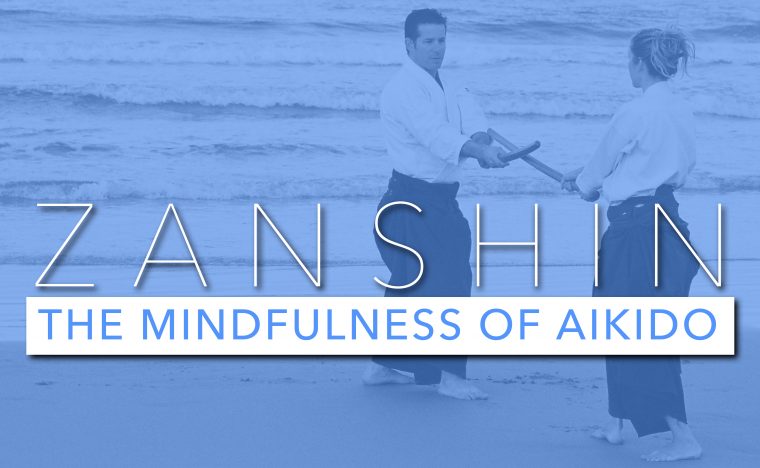
The term we use for mindfulness training in Aikido is “Zanshin”, meaning, “remaining mindful”, but a more workable translation of this practice is “Sustained Mindfulness.” Even though this term has a unique function to Aikido and Japanese martial arts, it is fair to say that Zanshin is the “mindfulness of Aikido.”
The 5 Characteristics of Zanshin:
1. Sustained Mindfulness
Zanshin is a state of full awareness with the continuity of experience. Once you activate Zanshin in the mind, your awareness is brought into a direct knowing of experience. This is not just a momentary knowing, but rather it is a knowing that is sustained moment by moment.
This is similar to the striking and ringing of a bell. When you strike a bell, it doesn’t ring for just one moment – it continues to ring into each new moment. But just as the bell inevitably fades, so too will the intensity of your attention. However, with Zanshin, even as the focus of your attention relaxes, the moment to moment knowing of experience remains.
2. Staying With Experience Until Its End
Once you activate Zanshin in your mind, your attentive awareness follows experience and objects of experience until the end. All of your experiences come, stay for a while, and then fade away. Zanshin puts you directly in the middle of this process.
Only when you follow an experience to the very end can you then be present for the very next arising of experience. You remain aware of the arising and passing away of experience with unbroken continuity.
“ZANSHIN” Sustained Mindfulness In Aikido
FREE Guided Meditation w/ Miles Kessler
3. Process Oriented Consciousness
Nothing sharpens your Aikido form better than the practice of Zanshin. When you practice Zanshin in Aikido, you follow a process to the very end, often coming to a complete stop by holding the form. You can express this stopping and holding of form at the end of a technique, the end of a particular move, or even the end of a particular segment of a technique.
My Aikido teacher, Saito Sensei, would constantly remind us to hold Zanshin for 2 seconds. The benefit of this training is that it puts you directly in the middle of the process of experience. Practicing Zanshin will help you cultivate a “process-oriented consciousness” which benefits not only your Aikido practice but any developmental practice of body, mind, heart or spirit.
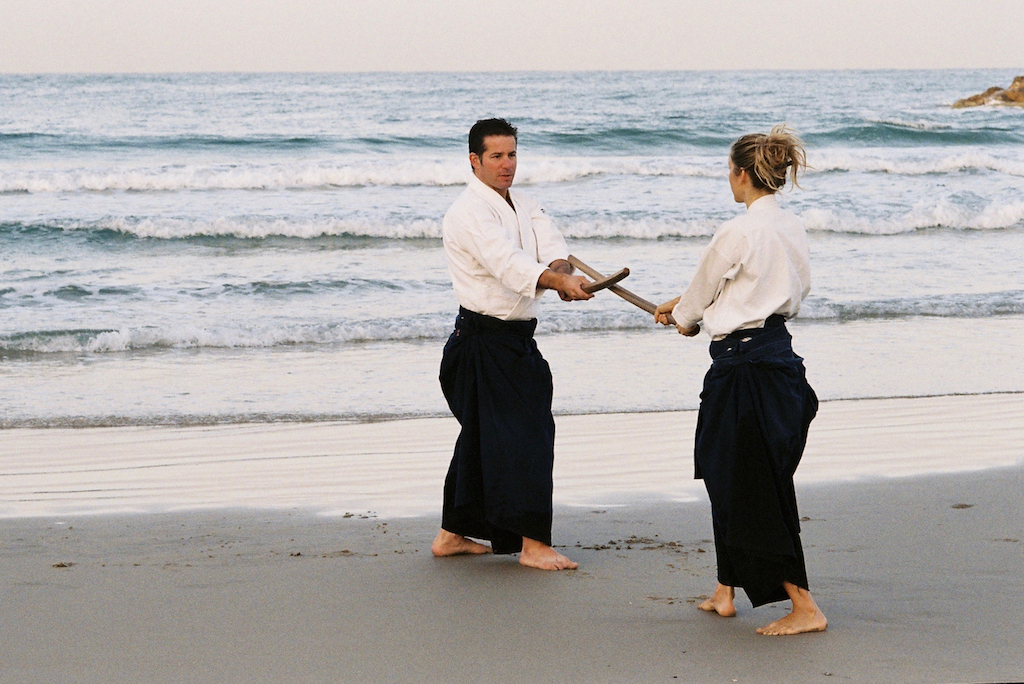
4. Anchors You In The Present
Practicing Zanshin in your Aikido form has an anchoring effect on the mind like nothing else. The mind already has a tendency to drift away from the present moment and even more so in a conflict. Practicing Zanshin in body and mind will gradually counter the tendency to drift out of the moment and anchor you in the present moment experience.
Aikido and the resolution of conflict can only happen when you are awake and aware in the present moment, and Zanshin is the essential inner skill that you need for any type of conflict resolution to arise.
5. A Natural State
You must understand that Zanshin is nothing less than the natural state of our consciousness. This can be tricky because the activating and sustaining of Zanshin can feel like a lot of effort and quite unnatural.
For most of your life, your mind has developed many un-mindful habits and tendencies. Countering these habits can seem like a Sisyphean task. It can seem like quite an effort to maintain Zanshin in your practice. But the effort is not the maintaining of Zanshin, but rather the effort to overcome the many bad habits of the mind, in order for Zanshin to be more established.
But with patience, perseverance, and continuous practice you will be able to establish Zanshin in your Aikido and your life with the natural ease of a Zen Master.
Are You Ready for Committed Practice?
Establishing Zanshin through committed practice is essential for any higher development in Aikido. In fact, it is also the core transformational practice of all spiritual traditions throughout human history. It is your best weapon for walking the path of the spiritual warrior.
Practicing Zanshin can be at times quite difficult, but it is the simplest practice in the world. It is always here and now. You only need to strike of the bell of your attention and listen.
Can you hear it now?
Question: What other characteristics of “Zanshin” do you see as important in Aikido? Leave your comments below!

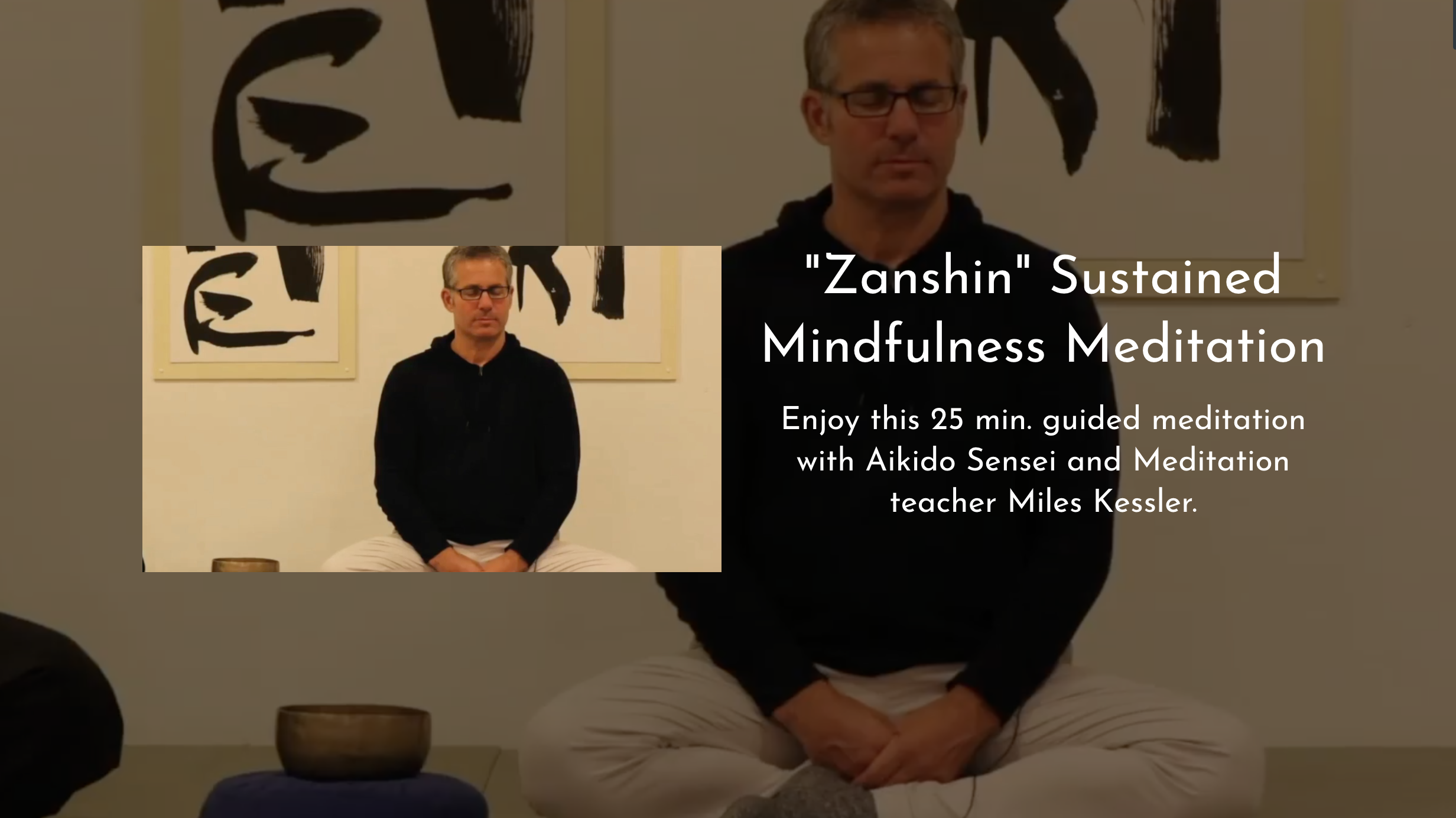
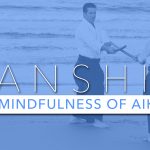
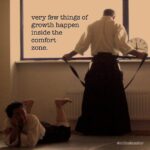
![[Encore Post] The Aikido Koan](https://theintegraldojo.com/wp-content/uploads/2018/03/TheAikidoKoan-150x150.jpg)
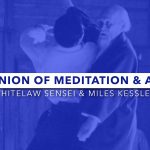
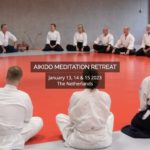
Please note: I reserve the right to delete comments that are offensive or off-topic.